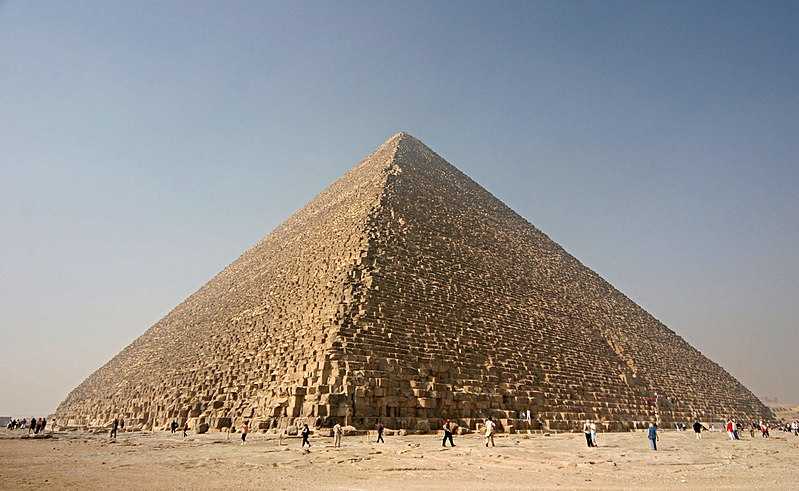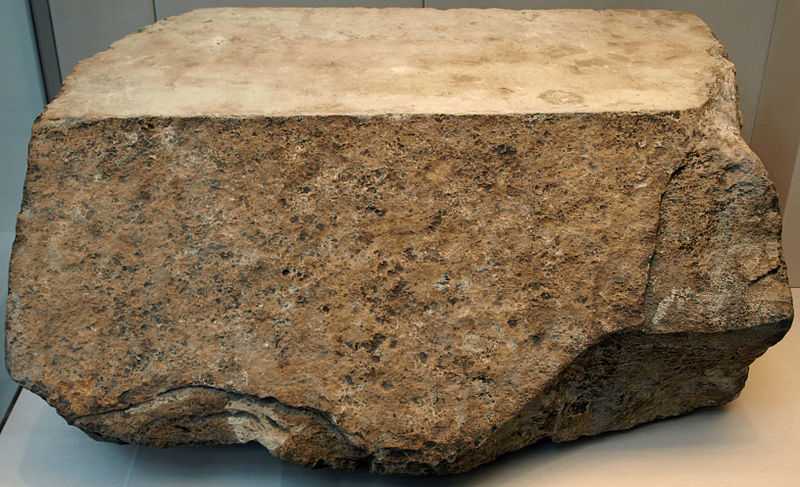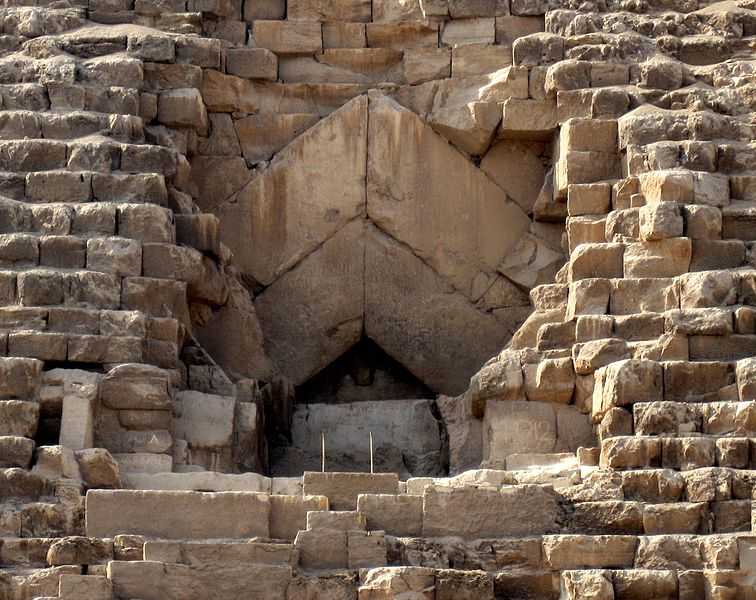Pyramid of Khufu
Tags : Historical Site
Time Required : During Winters
Ways to Experience this attraction
Pyramid of Khufu, Cairo Overview
Popular as the largest of the three Pyramids of Giza, and the oldest of the Seven Wonders of the Ancient World, the Great Pyramid of Giza has succeeded today in preserving the eternity of ancient Egyptian civilization. Originally having a height of 146.5 meters, the height of the Great Pyramid of Giza has reduced by around 9 meters since its completion in 2570 B.C.
Due to a mark in the interior chamber of the Pyramid naming the work gang and a reference of the Egyptian Pharaoh Khufu, the structure is also known as Pyramid of Khufu.
The Pyramid of Khufu was covered with white coloured casing limestones. These casing stones were slant faced and flat-topped. With time, most of the casing stones have got removed from their place. The large magnitude earthquake recorded in 1303 A.D. was one of the reasons behind this. Muhamad Ali Pasha further removed a lot of casing stones from the Pyramid of Giza in the early 19th Century A.D. During your visit to the Great Pyramid of Giza, some of these casing stones can even be found lying near the Pyramid structure.
On your visit to the Great Pyramid of Giza, one must also visit the other two pyramids of Giza, namely the Pyramid of Khafre and the Pyramid of Menkaure, along with the Sphinx and the Eastern Cemetery. The entrance to the Pyramid of Khufu is at a height of 17 meters from the ground level, and from there you can get a view of your lifetime. With modern built buildings of the town of El Giza on one side and the ancient Pyramids with the Sahara Desert on the other side, the view before your eyes will transition your thoughts from 21st Century A.D. to the year 2570 B.C. The best part of it is that you can return to the 21st Century whenever you want to.
History of Pyramid of Khufu
Built over a period of 20 Years, many historians consider Khufu’s vizier, Hemiunu (or Hemon) to be the chief architect of the Great Pyramid of Giza. The first measurements of the Pyramid of Khufu were taken by Flinders Petrie in between 1880–1882, which were further published in The Pyramids and Temples of Gizeh. Since then, nearly all the reports which have been published in context to the Pyramid of Khufu have considered the measurements taken by him.
Further, after the earthquake of 1303 A.D., the loosened casing stones of the Pyramid of Khufu were carried away by Bahri Sultan An–Nasir Nasir–ad-Din al –Hasan in 1356 A.D. to build mosques and fortresses in Cairo. Explorers and archaeologists who visited the Pyramids recorded the huge piles of rubble as leftovers from the collapse of the casing stones, which were later removed during excavation sessions at the place.

In addition to this, one can clearly observe complex of small buildings, even Pyramids surrounding the Great Pyramid. Out of these, most of the structures have gradually disappeared over time, and only a black basalt paving remains as on today. There have been claims in regard to these small Pyramid temples that they are linked with the Valley Temples built near the Sphinx.
Since the discovery of entrance to the Great Pyramid of Giza, there have been several speculations regarding the construction methodology of the structure. While many disagree with the fact that the huge stones were pushed, pulled or lifted by mortal hands, some suggest that the workforce building the Pyramid were organized in a hierarchy, and consisted of two groups of 100,000 men. Whatever be the reason, the Pyramid of Giza is not merely a monument. It is a symbol of intelligence and high–level craftsmanship possessed by ancient Egyptians.

Architecture of Great Pyramid of Giza
The original entrance to the Great Pyramid of Giza lies on its northern side, around 7 meters east of the centre line of the Pyramid. From this entrance gate, one will be led down a passage through the masonry of the Pyramid and into the bedrock beneath. After a certain distance, the passage levels up and continues for a distance of around 9 meters to the Lower Chamber.It can be clearly observed that the Lower Chamber was left under construction by the then workers. The actual purpose behind building this chamber remains unsolved to this day. The reason behind the so-called ‘air shafts’ built as part of the upper chambers cannot be understood as well.
The same passage leads to the Grand Gallery, which appears to be a cobbled passage with a height of about 9 meters. While passing through the Grand Gallery, one may observe the precision with which the stones have been positioned together in the walls, and the highly polished surface of the stones gleaming in the yellow lamps. Moving further along the Grand Gallery leads to the King’s Chamber. The King’s chamber is made out purely of red granite brought probably from the southern quarries of Aswan.

The architectural marvel of the Great Pyramid is such that the King’s Chamber is present exactly at the central axis of the Pyramid. The King’s Chamber was further sealed with massive granite blocks and the entrance shaft was filled with limestone to avoid opening of the Chamber.
Just outside the Great Pyramid lies the large Boat pits of Khufu. Out of seven Boat pits, five boat pits are located to the east of the Pyramid, while the other two pits lie on the south of the Pyramid. These boat pits are merely a model of the boat made up of bricks. The main intention behind these boat pits was to transport the King to stellar destinations in his afterlife. They were also used as part of the funerary processions of the King.
The Boat pits, the smaller Pyramid temples and the Great Pyramid of Giza collectively form the Great Pyramid complex. Even today, nobody has been able to predict the technology and the methods used for building the Great Pyramid, the structure which remained the tallest man-made structure on Earth from 2570 B.C. to 1311 A.D.
Sightseeing at Great Pyramid of Giza
People paying a visit to the Pyramid of Khufu may also spare time and visit the other two Pyramids of Giza, namely the Pyramid of Khafre and the Pyramid of Menkaure.Activities to do at Pyramid of Khufu
One may book themselves a camel ride across the premises of the three Pyramids of Giza. The camel ride will let you observe the beauty of Pyramids of Giza in a completely different manner.Shopping near Pyramid of Khufu
People visiting the Pyramid of Khufu can buy different types of souvenirs from the local vendors present outside the Pyramids.How to reach Great Pyramid of Giza
The only way to reach the Pyramid of Khufu is via road transportation. Since the Pyramids are situated on the outskirts of Giza city, it is advised to reach there either through your personal vehicle or through a taxi/ cab.Tips to Remember
- Carry plenty of water due to high temperatures during daytime;
- Wear Sports Shoes;
- Wear light and comfortable clothing;
- In case you are a Student, carry your Student ID to avail discount on Entrance Fee.
Facts about Pyramid of Khufu
The accuracy in length of the four sides of the Great Pyramid of Giza is only 58 millimetres.Read More on Pyramid of Khufu
Tips to Remember
- Carry plenty of water due to high temperatures during daytime;
- Wear Sports Shoes;
- Wear light and comfortable clothing;
- In case you are a Student, carry your Student ID to avail discount on Entrance Fee.
History of Pyramid of Khufu

Further, after the earthquake of 1303 A.D., the loosened casing stones of the Pyramid of Khufu were carried away by Bahri Sultan An–Nasir Nasir–ad-Din al –Hasan in 1356 A.D. to build mosques and fortresses in Cairo. Explorers and archaeologists who visited the Pyramids recorded the huge piles of rubble as leftovers from the collapse of the casing stones, which were later removed during excavation sessions at the place.

In addition to this, one can clearly observe complex of small buildings, even Pyramids surrounding the Great Pyramid. Out of these, most of the structures have gradually disappeared over time, and only a black basalt paving remains as on today. There have been claims in regard to these small Pyramid temples that they are linked with the Valley Temples built near the Sphinx.
Since the discovery of entrance to the Great Pyramid of Giza, there have been several speculations regarding the construction methodology of the structure. While many disagree with the fact that the huge stones were pushed, pulled or lifted by mortal hands, some suggest that the workforce building the Pyramid were organized in a hierarchy, and consisted of two groups of 100,000 men. Whatever be the reason, the Pyramid of Giza is not merely a monument. It is a symbol of intelligence and high–level craftsmanship possessed by ancient Egyptians.
